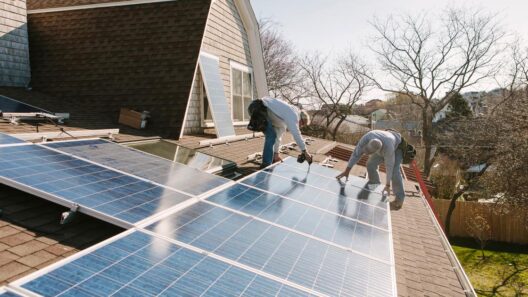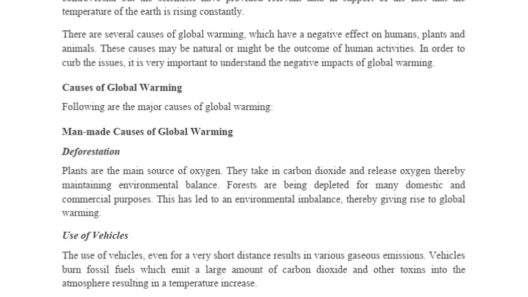The climate crisis stands as a formidable challenge of our time, requiring not just awareness but actionable strategies that can alter the trajectory of our planet’s future. As the ice caps melt and unprecedented weather patterns emerge, the call to address climate change becomes increasingly urgent. The Climate Crisis Playbook offers an array of solutions that meld ingenuity with practicality, appealing to both the hearts and minds of those who dare to envision a sustainable tomorrow.
In this exploration, we will traverse various dimensions of the solutions available, ranging from technological innovations to lifestyle changes that collectively mark the pathway towards mitigating global warming.
Embracing Renewable Energy: The Power Shift
One of the most pressing imperatives in combating climate change is the transition from fossil fuels to renewable energy sources. Solar, wind, hydroelectric, and geothermal energies present viable alternatives that minimize greenhouse gas emissions. The aesthetics of solar panels glistening in the sun or wind turbines gracefully turning in the breeze evoke a sense of hope and regeneration.
Solar energy has seen a significant uptick in adoption rates, catalyzed by technological advancements that have dramatically reduced the cost of installation. For individual homeowners, integrating solar panels not only diminishes reliance on traditional power sources but also provides economic benefits through energy savings.
On the larger scale, wind farms stand as monuments of human ingenuity, harnessing the natural currents of the atmosphere to generate electricity. These installations arise as symbols not just of energy production, but of a collective commitment to reshaping our energy landscape. Meanwhile, hydroelectric plants skillfully utilize the flow of water to produce electricity, representing a marriage of nature and innovation.
While these technologies proliferate, policy reform is equally critical to support a rapid transition. Governments must encourage investment in renewable energy through subsidies and incentives, tailoring legislation to prioritize sustainability. This systemic approach could catalyze a revolution in energy generation, decreasing our carbon footprint significantly.
Reimagining Urban Spaces: The Green City Initiative
The burgeoning urban centers of the world are not only hubs of commerce but also major contributors to carbon emissions. Reimagining urban landscapes to embrace sustainability can mitigate this impact dramatically. The concept of the “15-minute city”—where all essential services are within a 15-minute walk or bike ride—emphasizes connectivity and reduces dependency on automobiles. This model paints a vision of cities that not only provide convenience but also encourage a healthier lifestyle.
Integrating green spaces into urban planning is another pivotal factor. Parks, green rooftops, and community gardens serve dual purposes: they beautify cityscapes and enhance biodiversity while improving air quality. The visual appeal of verdant parks juxtaposed against concrete jungles fosters a sense of community while providing natural habitats for urban wildlife. These natural oases not only contribute to mental well-being but also serve as essential carbon sinks.
Furthermore, promoting public transportation systems that utilize electric buses and trains can significantly diminish vehicular emissions. Cities must invest in expansive cycling infrastructure, allowing for sustainable transit options that empower citizens to reduce their carbon footprints. With these concerted efforts, we can transform our cities into resilient ecosystems that exist in harmony with nature.
Advancing Sustainable Agriculture: Cultivating Solutions
The agricultural sector, while crucial for sustenance, is a key player in the climate crisis through its substantial greenhouse gas emissions. Transitioning to sustainable farming practices is paramount in crafting a holistic response to global warming.
Agroecology, which combines traditional farming techniques with modern science, exemplifies this evolution. By promoting crop diversity, minimizing chemical usage, and adopting water management strategies, agroecology not only enhances food security but also fortifies soil health. The tactile appeal of rich, fertile soils teeming with life is an aesthetic testament to the power of sustainable practices.
Community-supported agriculture (CSA) encourages local consumption and reduces the carbon footprint associated with food transportation. This model fosters community connections while promoting seasonal, organic produce. An emphasis on plant-based diets can also play a pivotal role in decreasing emissions related to livestock farming—a sector notorious for its environmental impact. The vibrancy of locally sourced fruits and vegetables presents a celebration of our relationship with the Earth, urging us to re-evaluate our consumption habits.
Technology, too, can propel us toward innovation in sustainable agriculture. Precision farming, employing drones and sensor technology, offers farmers insights to optimize resource use, minimizing waste and bolstering productivity. Such advancements, aesthetically entwined with the landscape, can usher in a new era of agricultural practices that honor both people and planet.
Collective Action and the Role of Advocacy
While individual actions are vital, the pursuit of systemic change requires collective mobilization. Grassroots movements and advocacy groups play an indispensable role in amplifying the call for climate action. Community engagement initiatives, educational campaigns, and collaborative projects are crucial in fostering a collective consciousness around climate issues.
Organizing local clean-up drives, conservation efforts, or educational forums allows communities to coalesce around shared goals, nurturing a sense of environmental stewardship. The visual spectacle of community members uniting for a common purpose showcases the power of collective will—transcending boundaries and instilling hope.
Policy advocacy is equally pivotal in shaping a future where sustainable practices take center stage. Lobbying for green policies, carbon pricing, and innovation grants emboldens legislators to prioritize environmental issues. A vibrant, engaged populace demanding change can catalyze shifts in the political landscape, emphasizing that effective climate action is not just a possibility—it is an imperative.
In conclusion, the Climate Crisis Playbook is rich with opportunities for innovation and transformation. By embracing renewable energies, reimagining urban environments, advancing sustainable agriculture, and engaging in collective advocacy, we can forge a path toward a more sustainable, equitable world. The aesthetic allure of a greener future is a vision worth striving for, beckoning each of us to play a role in this critical endeavor. Together, let us cultivate solutions that resonate with beauty and purpose, ensuring a livable planet for generations to come.







